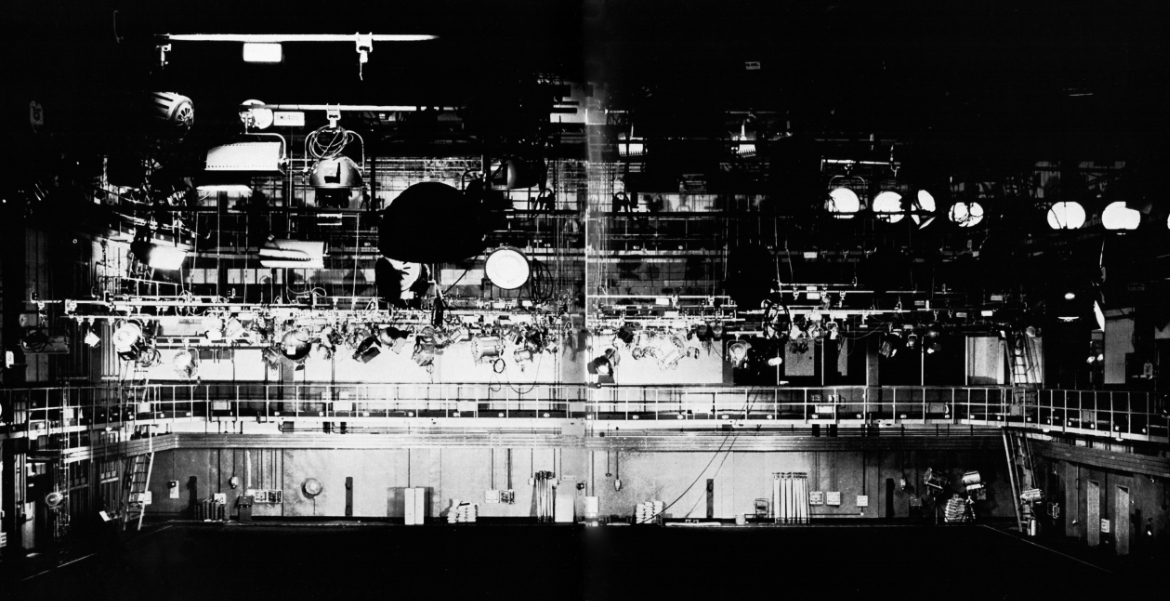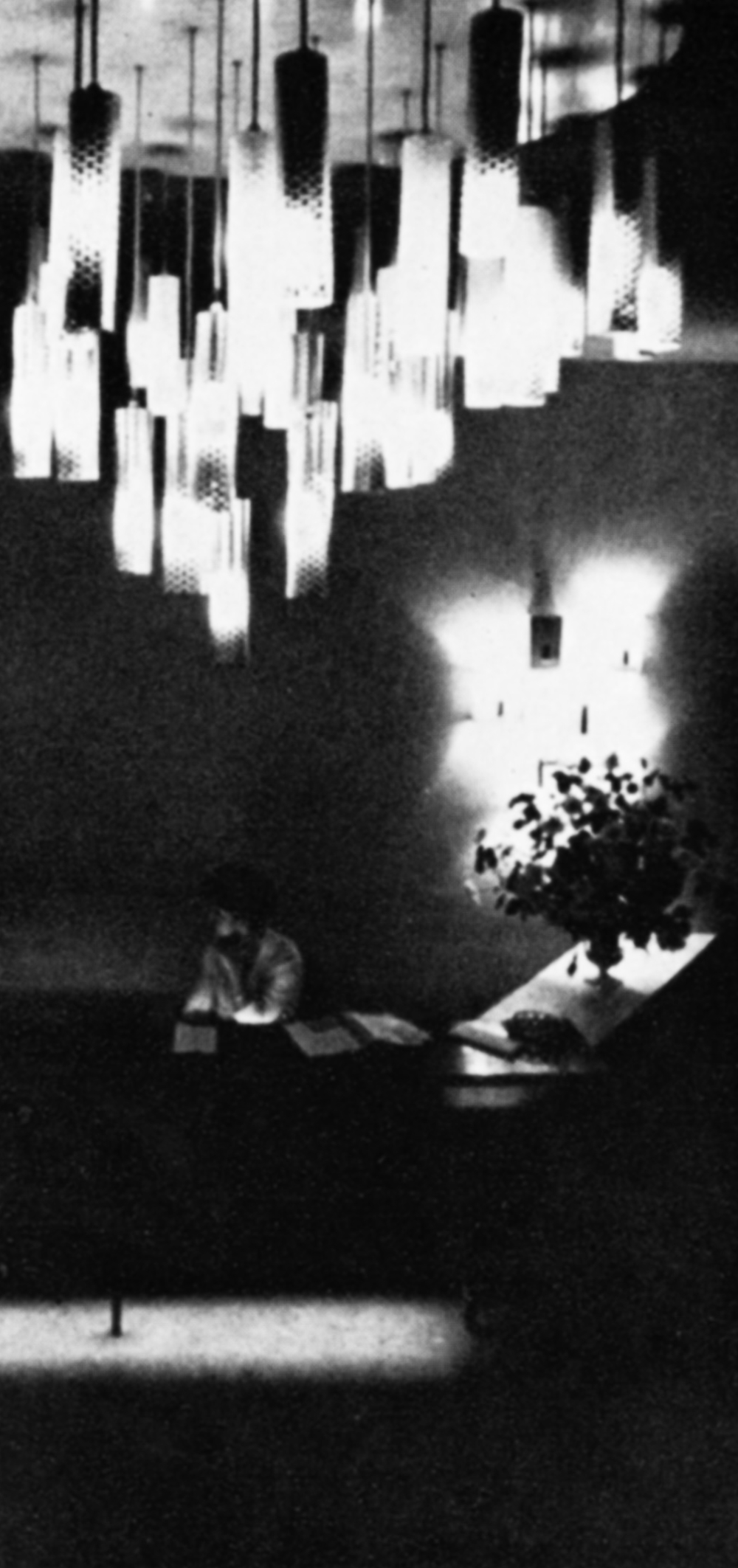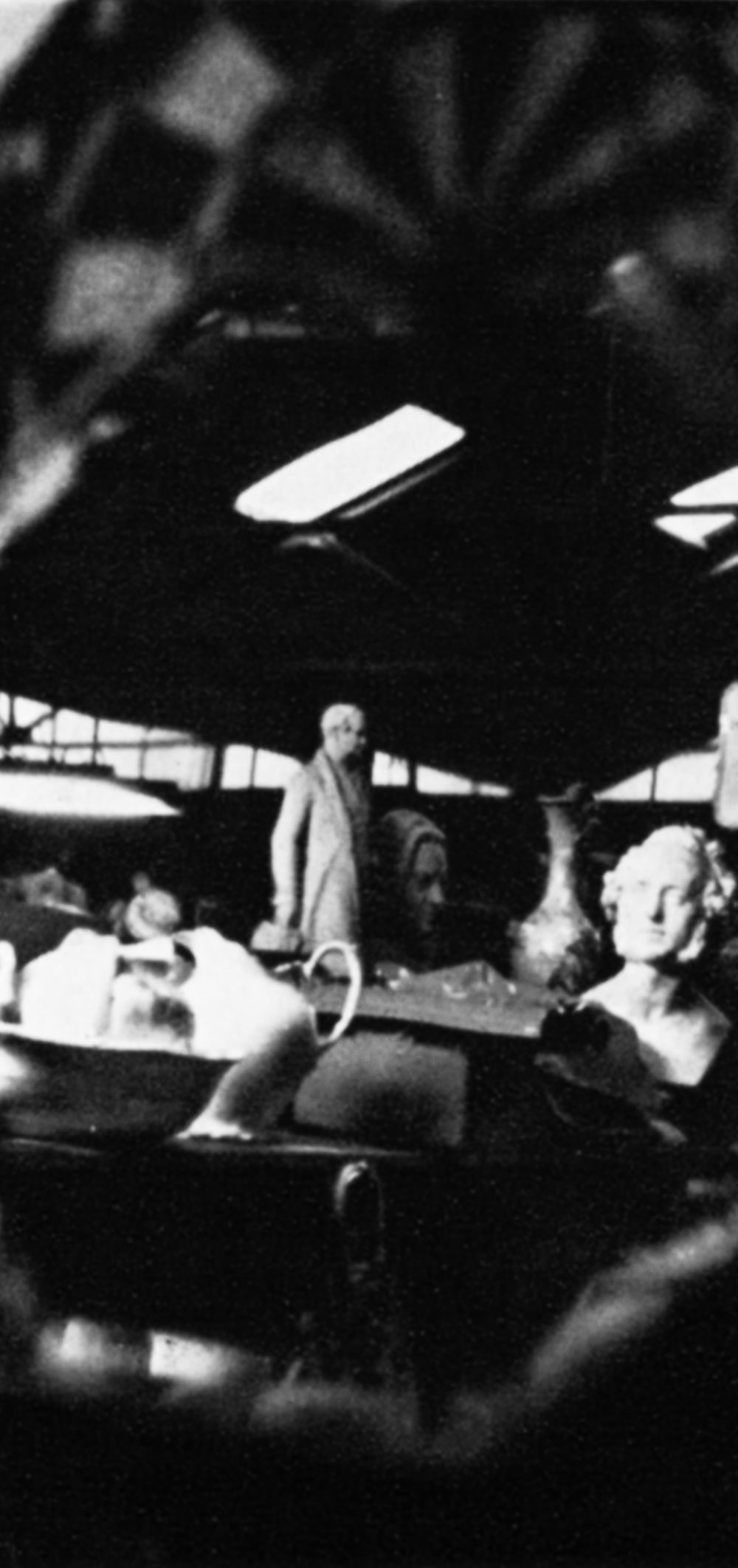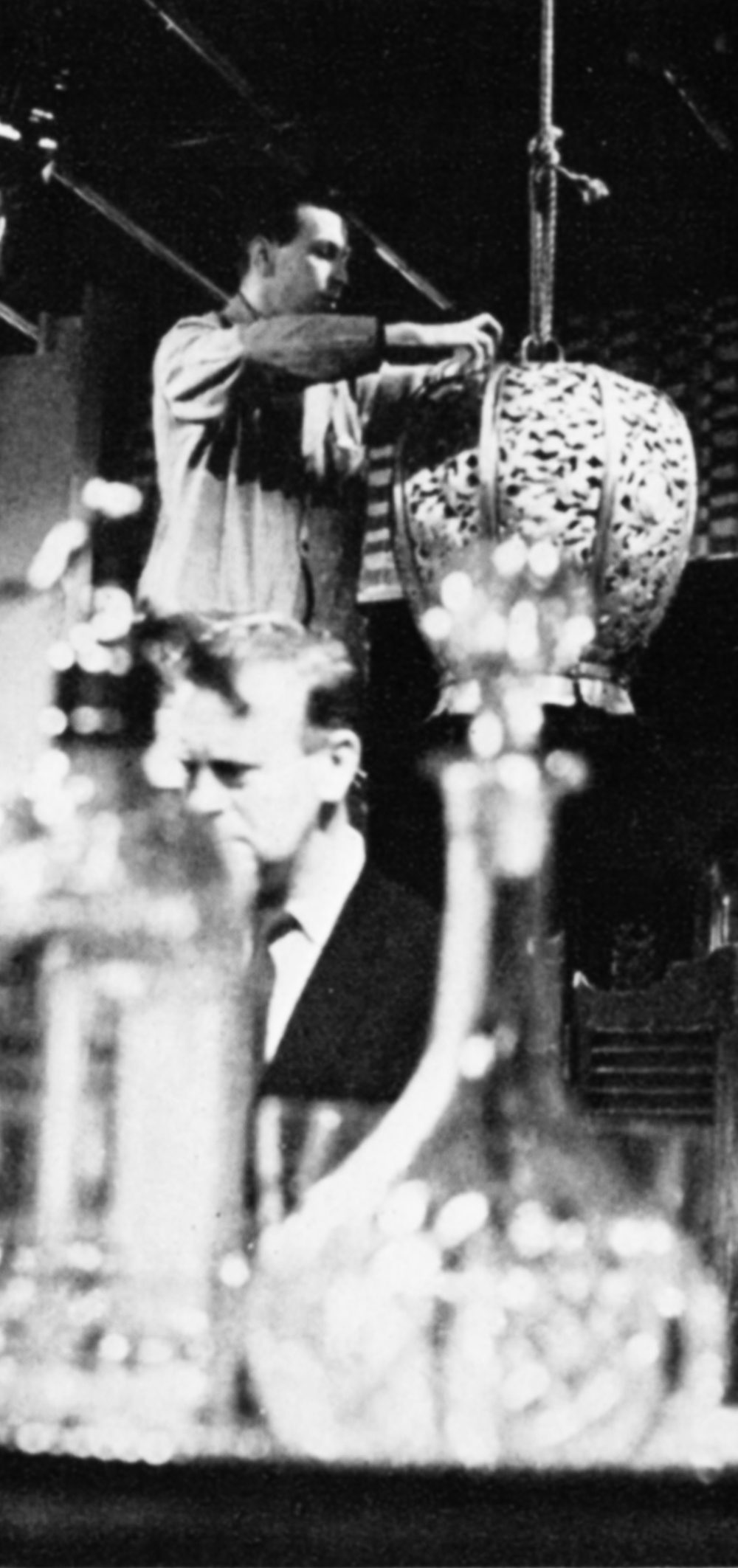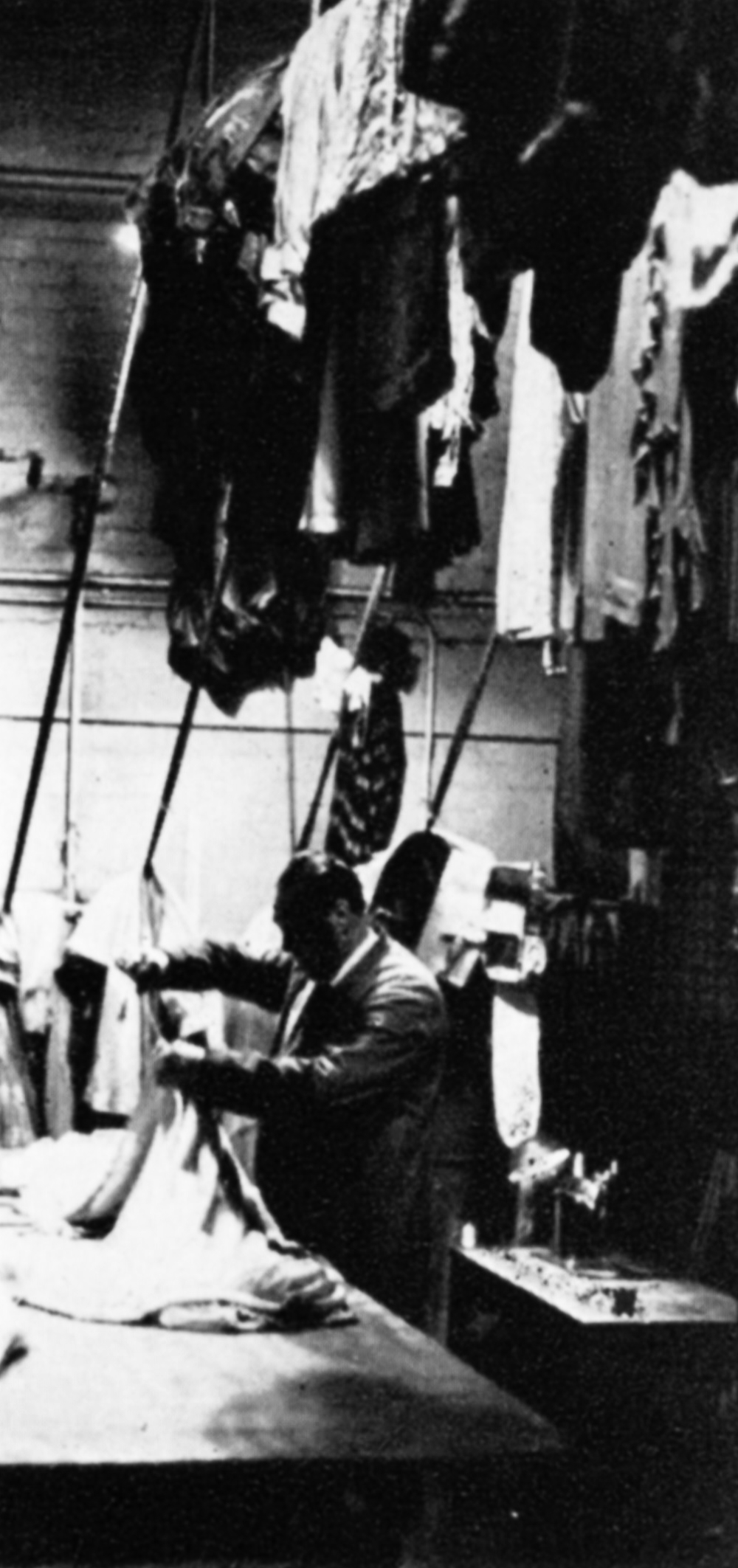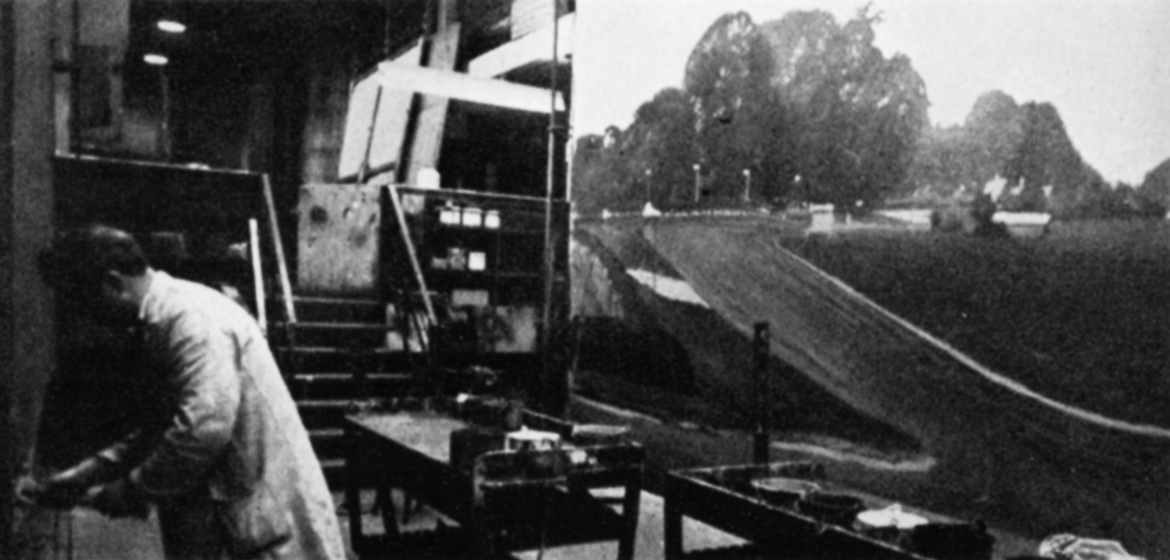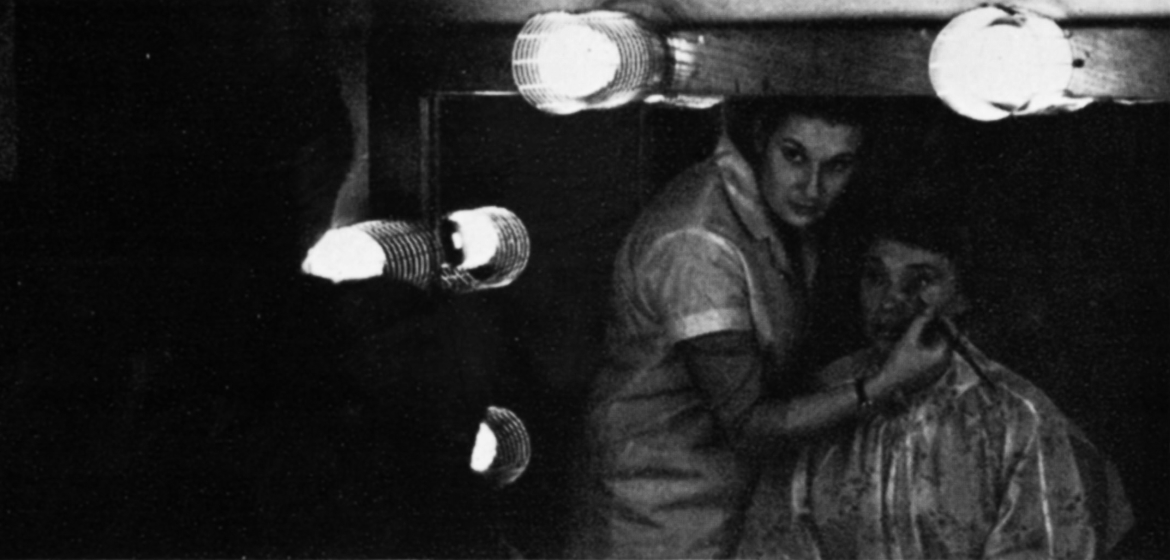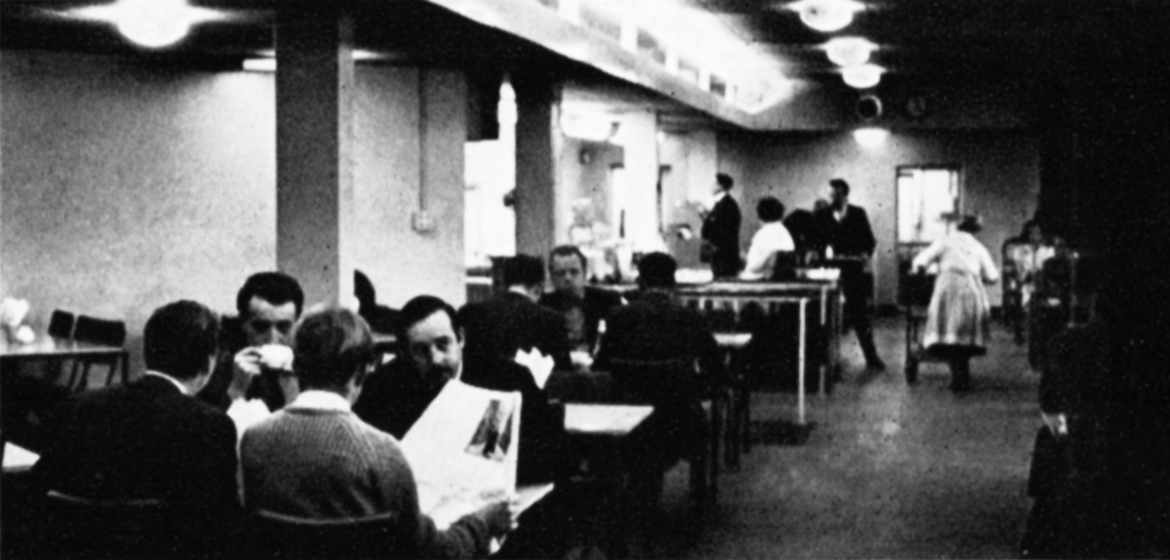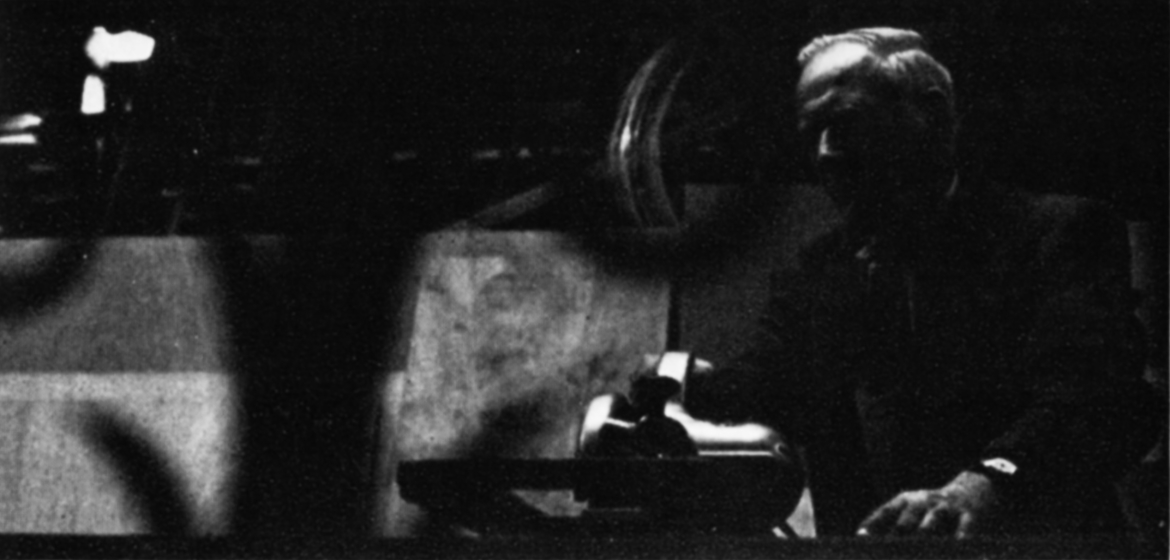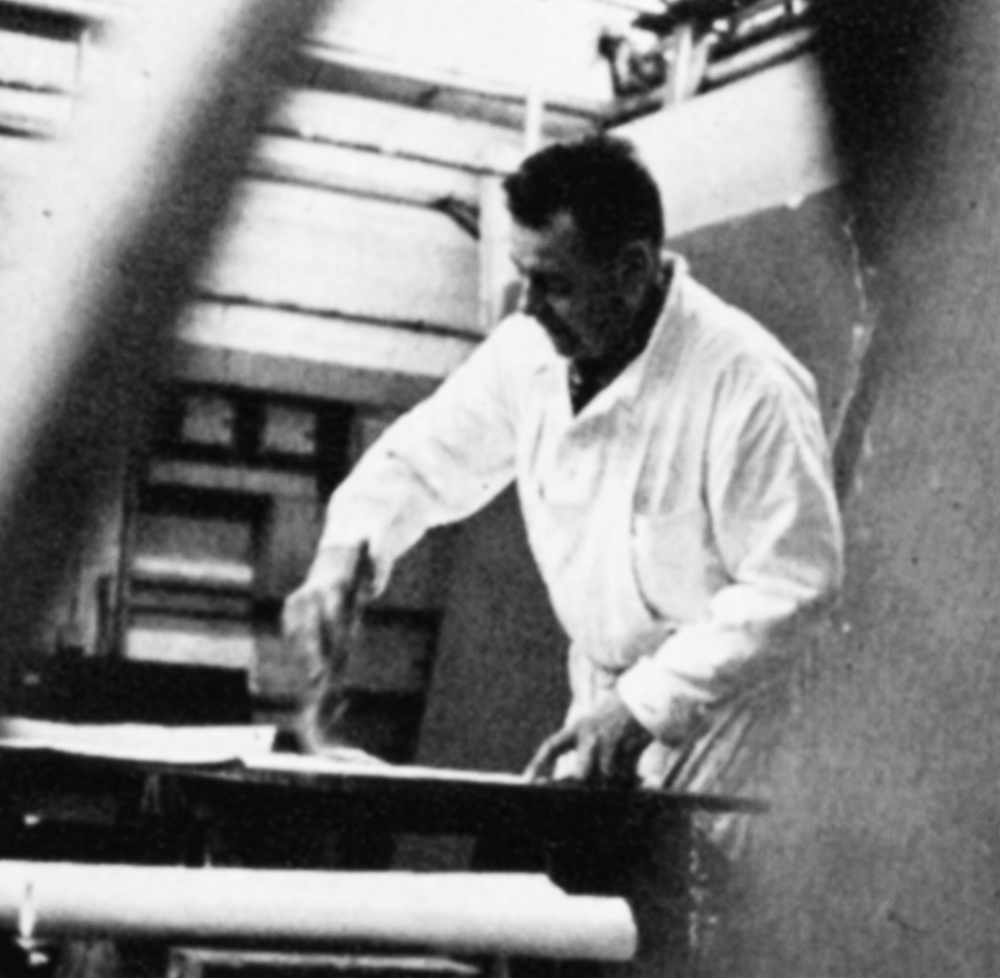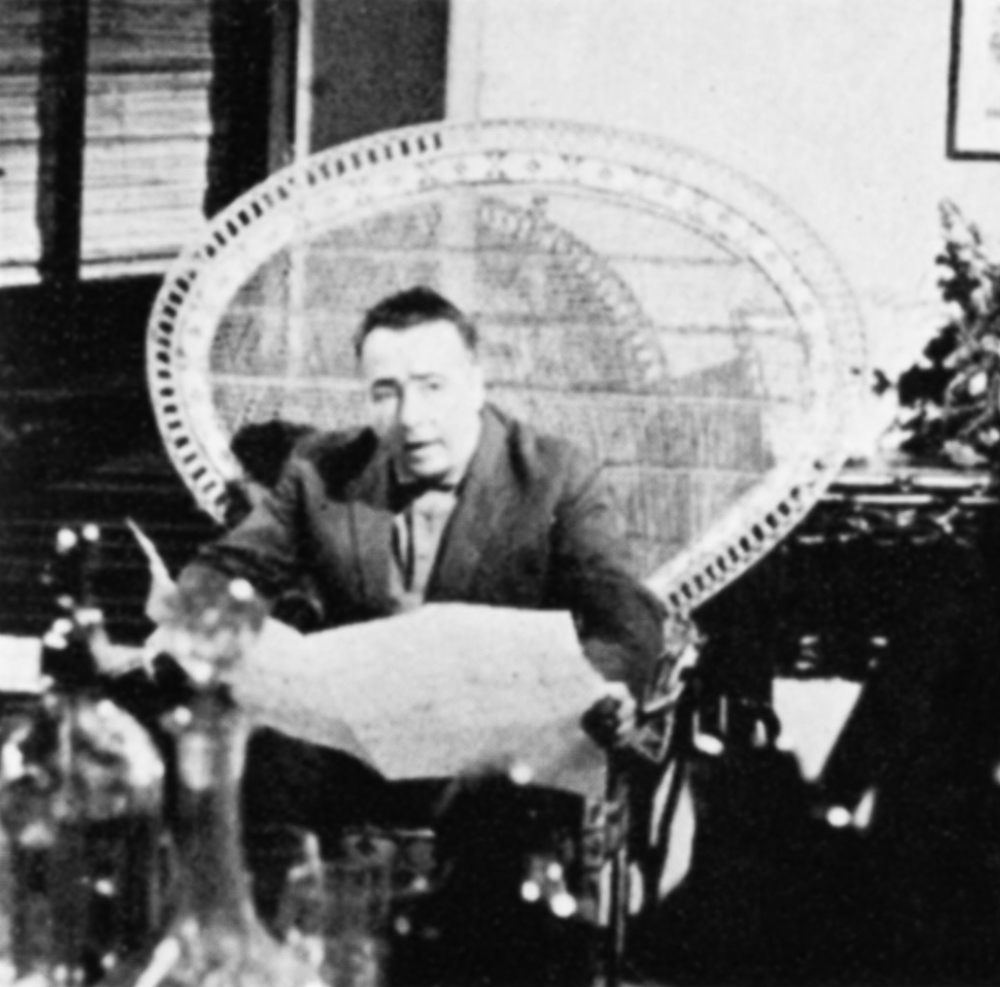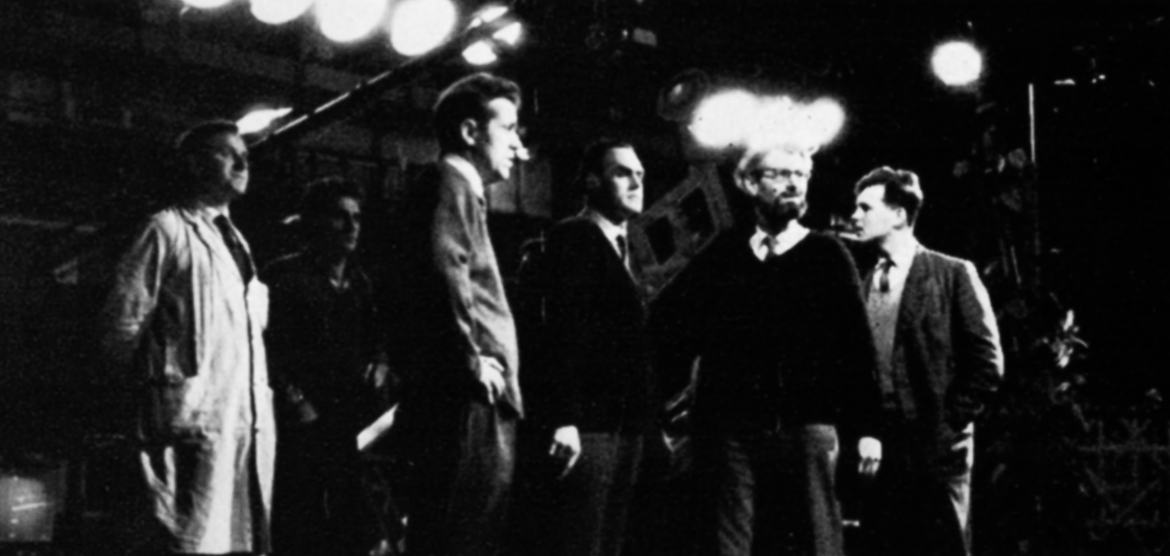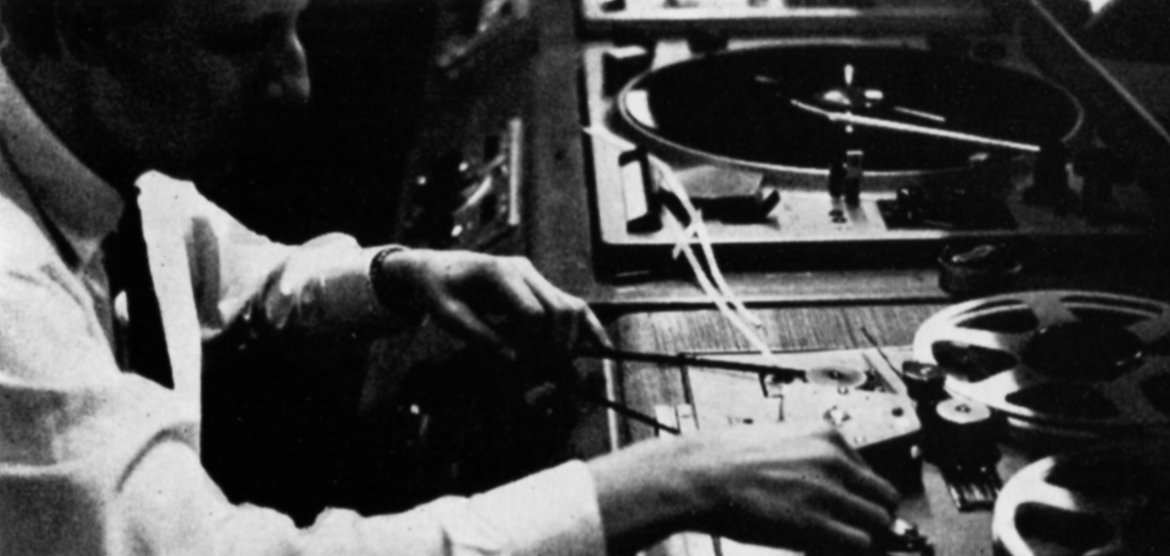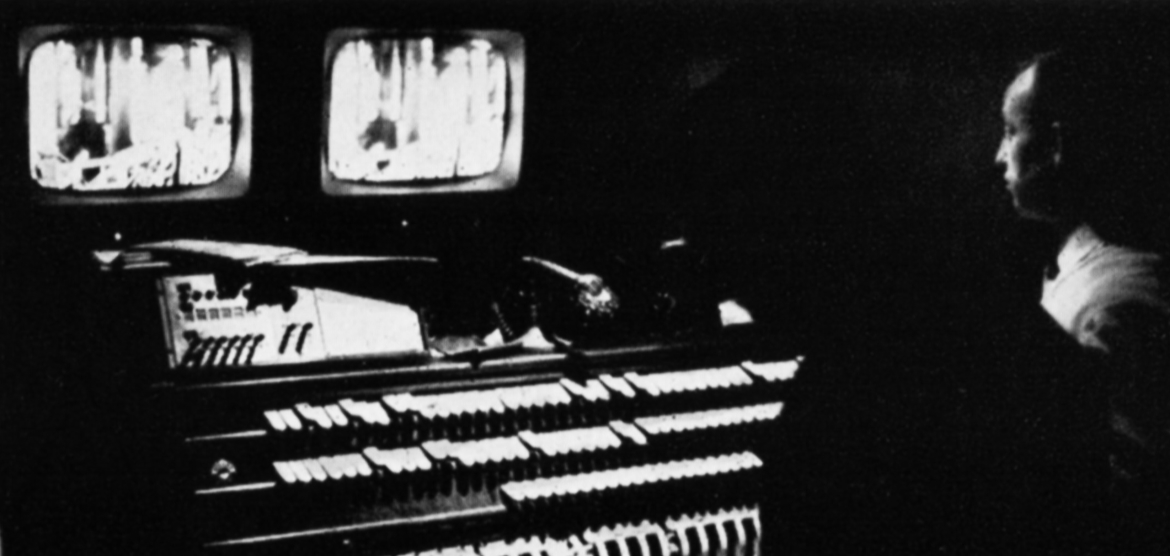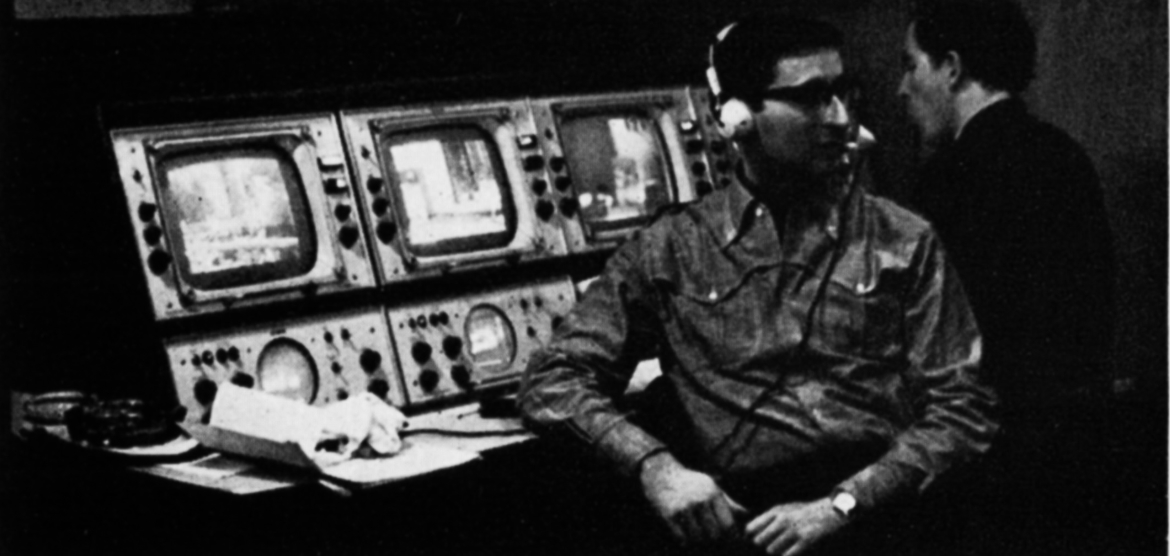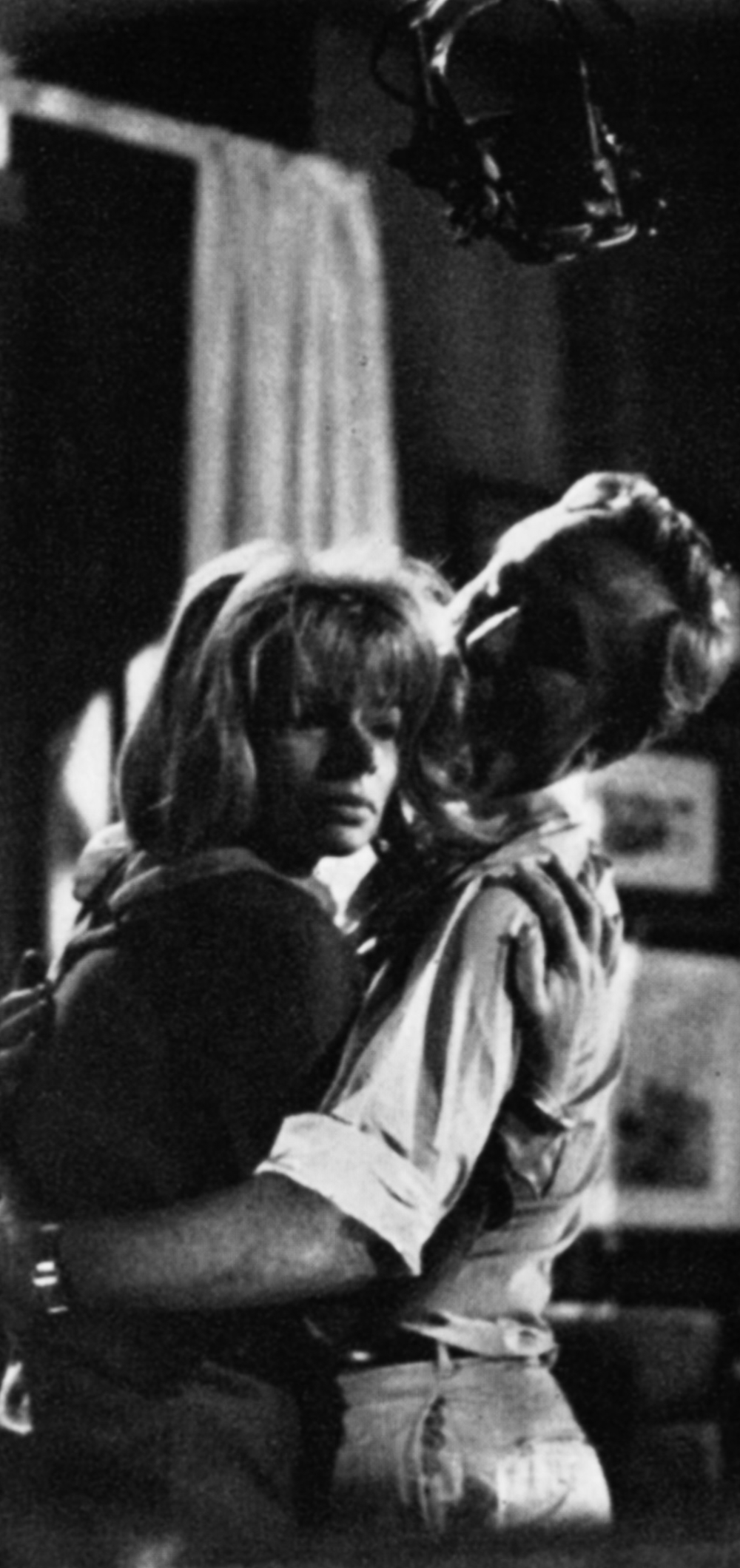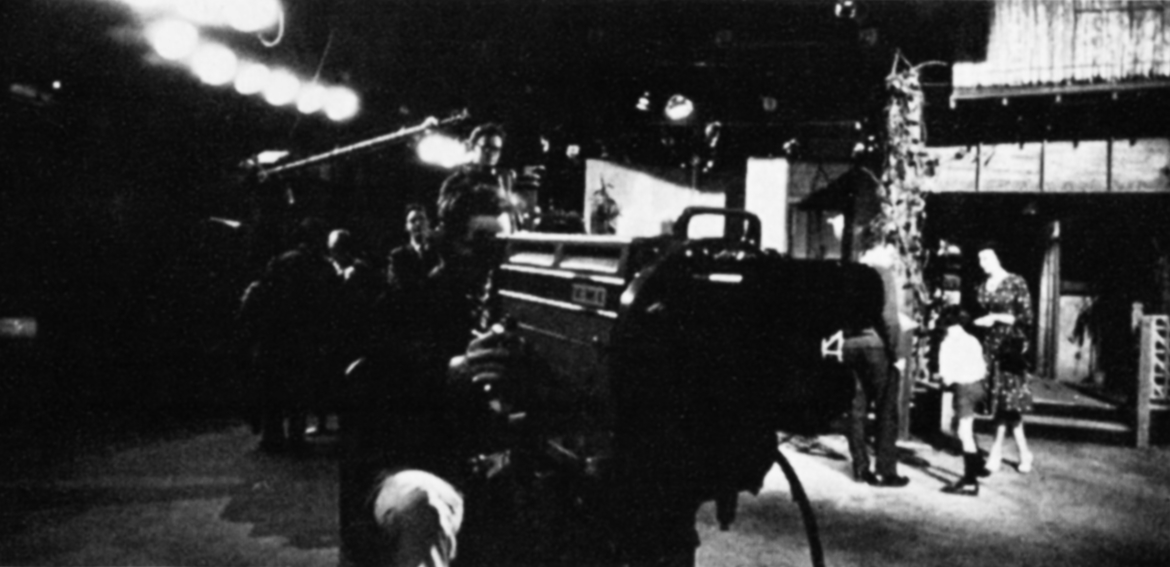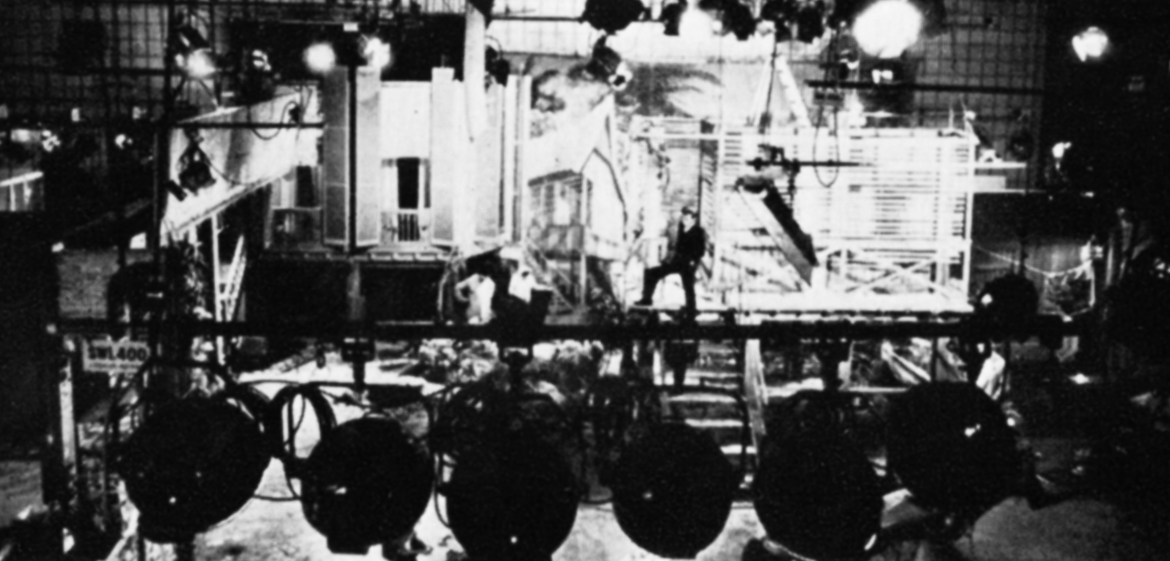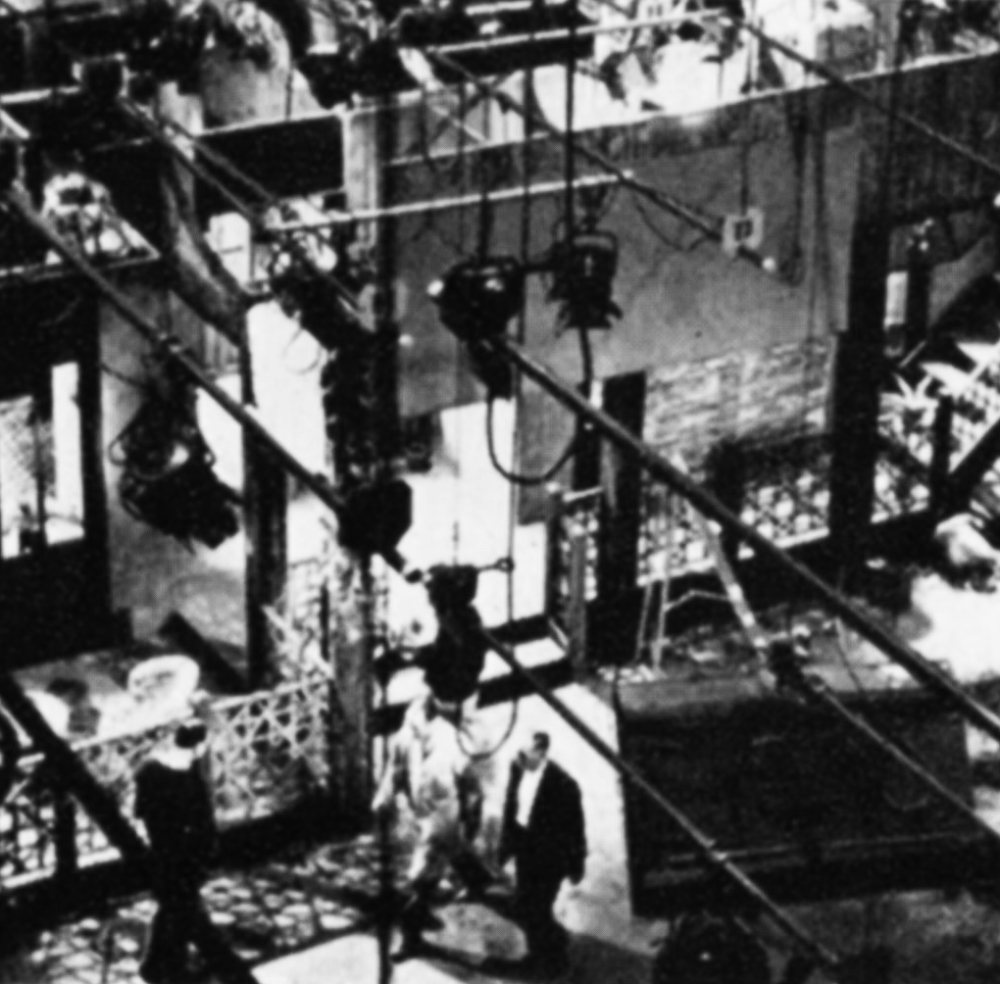The world comes to Studio 5
A trip through Rediffusion’s huge Studio 5 at Wembley

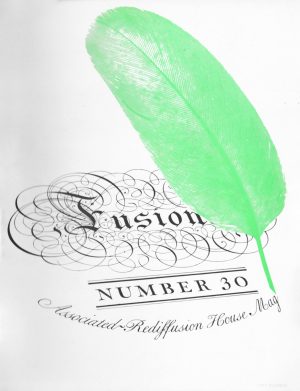
Three years ago on June 9, 1960, the first production was transmitted from Studio 5 at Wembley. Since then thousands of people from this country and from all over the world have come to stand and stare.
Advertising agents and advertisers have goggled at the lighting console, heating engineers have marvelled at the ventilation system, architects have wondered at the high degree of accuracy in the floor level, television experts have come from all over the world and few have gone away without learning something. All have been bemused by the giant doors – there is nothing to touch them anywhere else in the world.
When you live with something like Studio 5 you tend to forget that it is a show-piece just as the people in a town rarely visit an attraction which is a focal point for tourists… unless they want to show it off.
Those directly involved with handling visitors know how deeply people are impressed by Studio 5, but we who live with it tend to forget that this happens. We’ve told the story before, but it’s worth repeating, how the Japanese television engineer was told by a compatriot when he said he was visiting England: ‘You must see Studio 5.’
A brochure has now been printed to give away to visitors and the inside pages of this brochure are reproduced here because we feel that the staff might be interested in seeing what others will receive. Most of the photographs were specially taken by Donald McCullin.
Fourteen thousand square feet – an area the size of five lawn tennis courts – that is the extent of Studio 5. Fourteen thousand square feet. In Studio 5 you can have a complete circus ring, and a dance floor, and a full-scale orchestra and seats for an audience of 500 – all this for one programme – and this we have done many times. The first Studio 5 production was on June 9th, i960, and since that day it has been the scene of countless productions from full-scale spectaculars to intimate interviews. Studio 5 has an ingenious design. It can be used in two ways: either as the largest studio built for television in the world, or as two self-contained studio sections. Two massive 25-ton steel doors are lowered at a speed of 1 foot per minute, the sound-lock doors are closed, and the two sections 5A and 58 can be used independently and both are sound-proof and vibration-free.
A highly technical workshop like Studio 5 must have an equally skilled staff. In Studio 5 the hands of the craftsmen, artists, technicians that fashion every production, are experienced, talented and thoroughly professional. Even the hand of welcome in the reception hall plays its part. The hands that paint the backcloths. The hands that dress the set with properties. The hands of the make-up artists that prepare the cast for their performance. There are many pairs of hands and all of them help to maintain the high standard. So much to be done: a deadline to be reached every day. The set must be designed, then fashioned, then built. The property men must dress it with the hundreds of bits and pieces. The carpenters must modify, improve and alter. The curtains must be hung – but even in this apparent turmoil there is time for a meal, a drink or a quiet read.
1. Lighting console operator.
2. Lighting director.
3. Vision mixer.
4. Director.
5. Production Assistant
6. Visitor.
7. Visitor.
8. Visitor.
9. Visitor.
10. Sound Balancer.
11. Grams, operator.
A. Lighting console.
B. Patch panel.
C. Fuse box.
D. Selected picture.
E. Picture from transmitter.
F. Clock.
G. 2V monitors (12 channels).
H. Special effects desk.
J. Vision mixing panel.
K. Communications panel.
L. Sound Balancer’s console.
M. Tape recorder.
N. Gramophone decks.
Y. 25-ton steel doors.
Z. Sliding doors.
The stage is set, the cast is assembled, the Director arrives and rehearsals begin. High above the studio floor he sits, facing fourteen 21-inch monitors, and selects the picture he wants. His word is everyone’s cue. Flanking him are the Vision Mixer (right) and Production Assistant (left). In the early stages of the rehearsals the Director may have a discussion on the studio floor with the Designer, Floor Manager, Senior Cameraman or artists – but for the performance he sits alone. Each of the two sections of Studio 5 has its own Control rooms but when it is operated as a single unit, one half, 5A, becomes the master and 5B, the slave. Studio 5 is equipped to operate on the 405, 525 or 625 line standard. The Vision, Lighting and Sound controls are situated on the first floor with double windows and have an easy access to the studio gantries. Each section is equipped with four 4½-inch Image Orthicon Cameras and 5A can employ all eight cameras at one time. Lighting Control and the Camera Control Unit downstairs on Studio floor level can be likewise divided, or operated as a single unit.
The final ‘take’ – the last performance – the Studio is stilled before the opening seconds. The set is built, dressed and lit – everything is prepared. The Floor Manager, who hears the Director through his headphones, cues the Studio and the production begins. The cameras swoop in and out or crab sideways, peering, staring, prying. The lights beat down, the floor is tense and alert.
The final shots are taken, the performance ends. In half an hour the Studio is empty – to be filled again tomorrow – and the next day and the day after that. Studio 5 has a healthy appetite. But so has television.
About the author
'Fusion' was the quarterly staff magazine for Associated-Rediffusion and Rediffusion Television employees.

